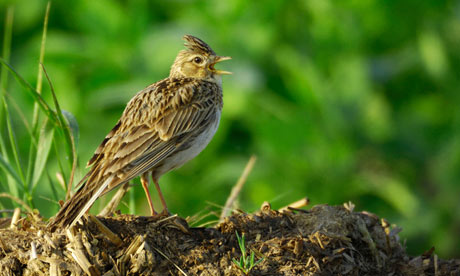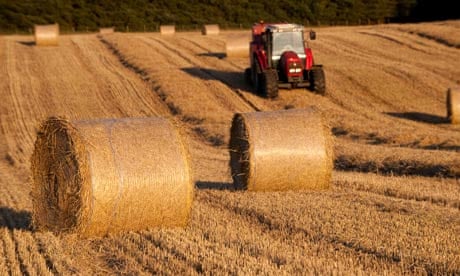Last week the Guardian published an interesting article that highlighted the startling decline of common bird species, such as the sparrow and skylark, across Europe. This information comes from a recent study, which has shown that bird populations across Europe have decreased by over 420 million in the past 30 years. Perhaps rather surprisingly, it is the more common bird species that have suffered the most, with house sparrow populations falling by 62%, starlings by 53% and skylarks by 46%, over the last 30 years.

Skylark (Alauda arvensis) have experience dramatic declines over the last 30 years. Photo © Alamy
The results of the study suggest that conservation efforts for rarer European bird species are working well, but the specialist nature of the projects are not providing adequate protection for the more common species. It may be that protecting rare bird species is easier than widespread efforts to protect many common species. Rarer birds such as marsh harriers and stone-curlews are doing markedly better, by comparison, but have been the focus of carefully targeted conservation efforts. Stone-curlews, for example, receive a high level of protection from the EU and have done particularly well over the last 15 years because of extensive efforts, by conservation organisations and landowners, to prevent the destruction of stone-curlew nests on arable land.
Stone-curlew (Burhinus oedicnemus). Photo © Chris Gomersall (rspb-images.com)
Indeed, one of the main reasons behind the marked decline of Europe’s common bird species the shift from low-intensity, pastoral agriculture to intense arable farming. Many common European birds, such as the skylark (which occurs in most European countries), are threatened by intensified grassland management. Skylarks prefer to breed in open fields, and nest on the ground where the vegetation is about 20-50cm tall. Changes in the way that crops are grown and when they are planted, has resulted in fewer places for skylark to nest on the ground, and difficulty finding insects to feed their chicks.
So what does the future hold for common European bird species? Well, there is no doubt that agricultural intensification plays a major role in declines across Europe. Conservationists suggest that wildlife-friendly farming schemes will help reverse this trend and benefit more common species too. Agri-environment schemes, for instance, are land management schemes that provide farmers and land owners with funding to protect and sustainably manage their land. These schemes have been particularly successful at aiding the recovery of stone-curlews, corncrakes and cirl buntings but are currently fairly localised. It has been suggested that spreading the efforts across Europe and creating widespread agri-environment schemes could help prevent further declines.

Photo: © Wayne Hutchinson/Alamy
Eleanor Kirby-Green
SNCV Biodiversity Assistant






